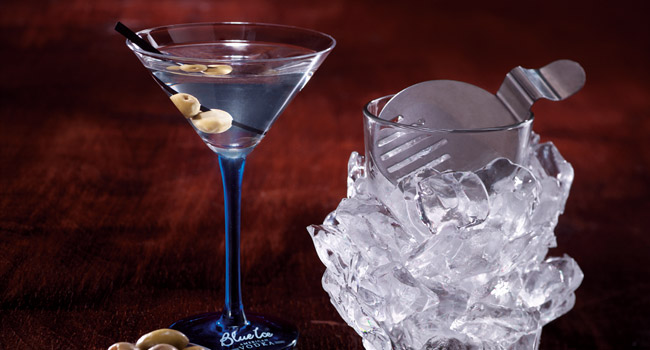What’s Archimedes Got to Do With It?
The Story of the Ten Minute Martini™ and why it’s arguably the finest martini you’ll ever taste.
More than thirty years ago I stumbled on a martini preparation that eventually became known as the Ten-Minute Martini™. As you’ll see, this was a bartender’s accident pure and simple.
I was about to stir a guest’s martini when he motioned me to stop and instructed me not to finish his cocktail, indicating he would be back in five minutes. Unsure just what to do, I buried the unstirred martini in the ice well to await his return. Twenty minutes later he did, apologetically saying he would drink the diluted martini. In spite of my assurances that I would be happy to begin again, he wouldn’t have it. After taking his first taste, my guest’s eyes widened, his grin spanned molar to molar and he said, “Wow! You’ve got to taste this.” Thinking that the product had essentially become water, I again assured him that it was not a problem for me to make another. But he persisted —I should try this martini. With apologies to the Health Department and decorum police, I did. “Wow!” It was the smoothest martini I’d ever wrapped my lips around. Smooth and in no way diluted, as we had assumed. Now, this fella kept ordering the “long martini,” even calling ahead so that it would be ready upon his arrival. Together we kept ratcheting down the time, eventually settling on ten minutes as optimum for this preparation. But we still hadn’t grasped what had occurred. We just knew it worked, and worked consistently.
It was four to six weeks later when the light went on. High school physics — 1962: Archimedes, Sir Isaac Newton and a couple of guys named Navier and Stokes, to acknowledge but a few. We’re talking fluid dynamics here — convection. Some of the same principles, laws and equations associated with ocean currents are applicable to an iced mixing jar filled with gin and vermouth, then buried in ice and left on its own for a period of time. Molecules of liquid descend in suspension as they chill, displacing the molecules below. In a small vessel like a bar’s mixing jar, it is in fact a very slow stirring. Now, this was most appropriate; almost poetic, I thought. I had been taught never to shake a martini in spite of James Bond. Stirring Manhattans and martinis was the accepted method since my grandfather’s day.
In 1979, I was working in Sonoma County, California. Commuters returning home from San Francisco would make a mobile-phone call (remember those?) after breaking through the traffic bottleneck at the north end of Marin. Once crossing into Sonoma County they were on the final approach to downtown. “Pat, bury one,” was the order. “I’m ten minutes out.” And so it happened. The Ten- Minute Martini was finally christened and has been slowly gaining popularity since.
Well, that’s my story and I’m stickin’ to it. I’ve even hinted at some of the science. But how to explain the physics in common terms and, more importantly, what’s it mean to your taste buds? I’ve been using a dance metaphor for several years now and it seems to work. Shaking a martini is like slam dancing. The partners, in this case the gin and vermouth, approach one another and immediately repel. As a result a shaken martini is very cold, but the component parts are still distinct, having never really gotten close.
Stirring a martini is a waltz. The partners are closer and there is a hint of romance. A stirred martini is cold, and while you can still discern its components, their individuality has become subdued. The martini begins to emerge.
The Ten-Minute Martini completes the process. The Ten-Minute Martini is a very slow and romantic dance through the ice. The partners relate to each other in an intimate manner, resulting in a marriage. That marriage is the martini in full flower. The gin and vermouth are there but no longer there. Taste one; I think you’ll understand. Archimedes would have. Enjoy!
Pat Carden
Chandlers Restaurant, Boise, Idaho







Permalink
Permalink